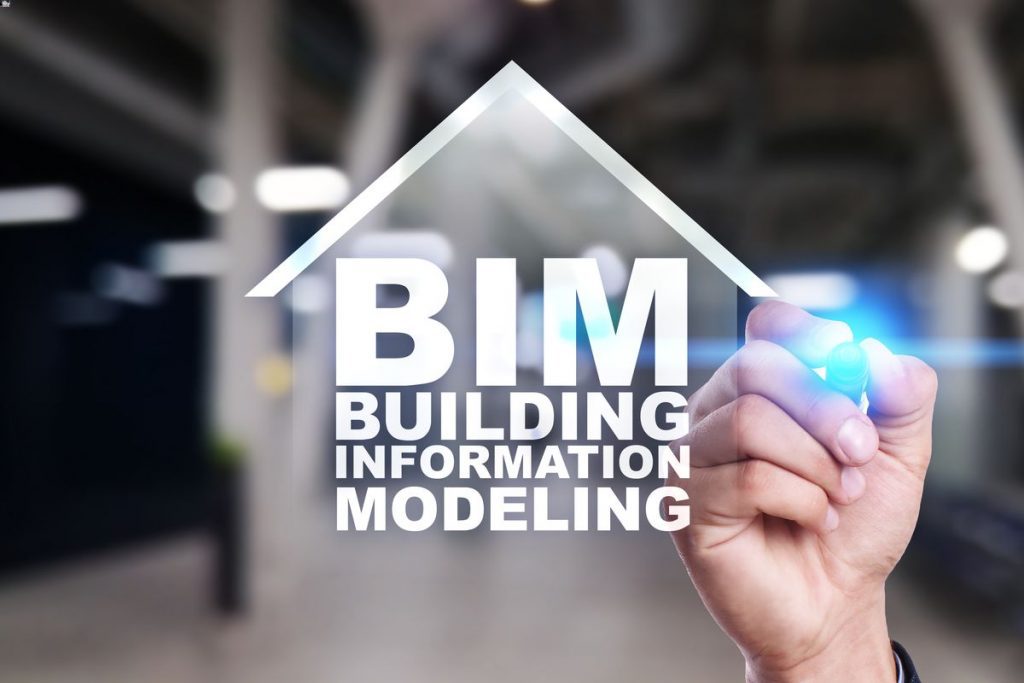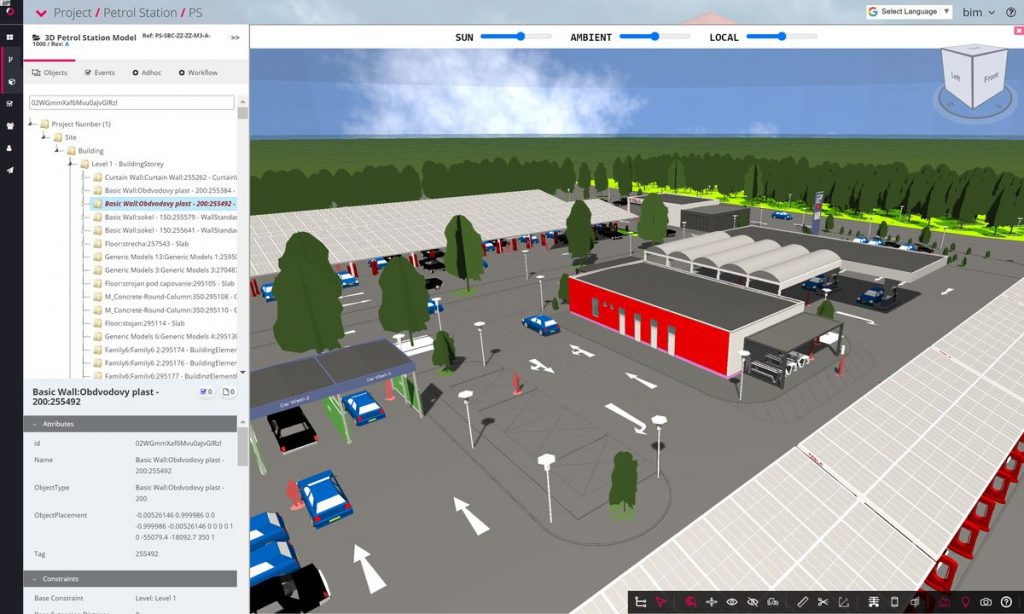
What Is BIM? (Building Information Modelling)
At REBIM®, we specialise in providing BIM services and solutions to the construction and engineering industries. But what is BIM (Building Information Modelling) and why is it so important in today’s construction landscape?
In this blog post, we explore what BIM is, how it can benefit the AEC industry and examples of how BIM is transforming the construction industry.
What is BIM?
Building Information Modelling (BIM) is a process that involves creating and managing digital representations of the physical and functional characteristics of a built asset.
BIM provides a shared knowledge resource for information about a facility, that forms a reliable basis for decisions during its life-cycle. This includes everything from the earliest conception through design and construction, operations and finally on to decommissioning and demolition.
The Building Information Modelling process typically uses software to integrate structured, multi-disciplinary data to produce a digital representation of an asset across its lifecycle, from planning and design to construction and operations. Making it an essential tool in the construction of buildings.
This digital representation is referred to as an ‘Information Model’ and may consist of 3D modelling data, documents, drawings, images, data tables and many other types of digital media. The data is organised and ‘tagged’ using metadata that describes assets.

The 4 Stages of BIM
The BIM process can be broken down into four principle stages:
Analysis / Evaluation
This involves assessing the technological and procedural capabilities of your team. Alongside conducting feedback sessions with the internal team regarding the implementation of new technologies and evaluating legal agreements amongst other factors.
Preparation for Transition / Project Pre-Planning
This stage involves preparing for the transition to implementing BIM. The BIM process is customised for your specific building project during this stage.
Plan / Design Implementation and Construction
This stage involves collaborating with every stakeholder on the project to deliver the outcomes using the BIM process. The plan/design implementation stage also includes preparing for the transition from the design and construction phase to the operations and maintenance phase.
Building Facility Operations and Maintenance
This is the final stage, where the BIM model is used to manage the operations and maintenance of the built asset.
What are the benefits of BIM software?
BIM (Building Information Modelling) software provides a range of advantages for professionals in the architecture, engineering, and construction fields.
Using BIM facilitates better coordination between different project teams involved in a construction project, resulting in enhanced communication and collaboration.
BIM software enables real-time project updates that help streamline workflows, reducing errors and the need for rework. It also provides valuable insights into the expected costs of a project, which helps in accurate budgeting and risk management.
Another benefit, is that BIM software improves the efficiency of the design process, as it allows designers to create 3D models and simulations, allowing stakeholders to visualise the project before construction begins.
This results in better-informed decision-making, which can lead to faster project completion, reduced costs, and improved quality. Overall, BIM software helps construction professionals save time and money, better manage risks and deliver superior quality projects to clients.
When should BIM be used?
Building Information Modelling (BIM) is widely used in the construction industry during the design stage of a project.
The BIM process uses software that allows architects, engineers, and construction professionals to create a digital model of a building or structure that can be shared and used throughout the project lifecycle. This means that potential issues can be identified and resolved before construction begins, reducing the risk of costly changes and delays down the line.
BIM software can also help improve collaboration between project stakeholders and increase project efficiency. It is especially helpful for complex projects with multiple disciplines and systems, where coordination and communication are crucial.
However, BIM may not be necessary or feasible for all projects, especially smaller or less complex ones. Therefore, it is important to assess the project’s needs and resources to determine whether or not BIM should be used.

Examples of how BIM is used in Construction
Shanghai Tower
Known for being one of the tallest and most environmentally friendly buildings, Shanghai Tower is a prime example of a BIM project. From the outset, its stakeholders and workers utilised BIM for both the design and construction process.
The tower stands at an eyewatering 121 stories tall and consists of nine cylindrical structures stacked on top of one another. These structures form vertical communities complete with their own cafes, restaurants, sky gardens, and retail spaces.
Oakland International Airport
During the construction of a $26 million central utility plant at Oakland International Airport, Turner construction company utilised BIM technology.
While the exterior of the 8,300 square foot plant was relatively simple, the complex network of electrical and HVAC systems required to keep the airport running smoothly around the clock necessitated the use of BIM technology.
What is the difference between BIM and CAD?
BIM and Computer-Aided Design (CAD) software systems are widely used in the construction industry. While all CAD and BIM tools are used to create designs and drawings, and can often be very similar, there are significant differences between them.
CAD tools are mainly used to produce both 2D drafting and 3D models for precise detailing, with an emphasis on the geometry and dimensions of the design. On the other hand, tools that are specifically for BIM generally focus on creating 3D models that also captures and stores asset information relating to the building products and their performance, making it a much more comprehensive system that can be used throughout the entire lifespan of a building.
BIM software allows architects, engineers, contractors, and owners to collaborate, share information and data in a single file, leading to better coordination, communication, and decision-making. BIM offers detailed visualisation and simulation capabilities, making it possible to detect and resolve issues before construction begins.
In contrast, CAD is limited to designing only, and often lacks the ability to simulate and analyse the design. Making BIM a much more comprehensive system with powerful information capabilities when working on architectural projects, whereas CAD is a simpler, more precise system focused on creating detailed designs, such as mobile phone designs.
The difference between CAD and BIM can be nuanced, and it is really the context in which the tools are used that makes the difference. BIM is a process for built assets and in reality all of the systems used in CAD and BIM can do the same job if they are used for the intended purpose.
Why has BIM adoption increased in the UK?
The use of BIM in the UK has increased in recent years due to a variety of factors.
One key reason is the UK government mandate requiring the use of BIM Level 2 on all publicly-funded projects since 2016. This has created a broad awareness and understanding of BIM among industry professionals in the UK.
BIM adoption has also been driven by the industry’s need for greater efficiency and productivity. BIM software allows stakeholders to work collaboratively in real-time, reducing errors and improving communication across the supply chain.
This has been particularly important in the UK as the major construction projects being undertaken in the country demand faster and more efficient solutions.
The need to keep up the pace with global competition has also contributed to the rise of BIM adoption in the UK. BIM has become an industry-standard in many countries worldwide, and UK companies are keen to remain competitive in the global market.

BIM roles and responsibilities
The roles of BIM team members vary depending on the project’s complexity, scope, and size, but they generally fall into three categories: design, build, and operate. The design team comprises architects, engineers, surveyors and other professionals who use BIM technology to create a detailed digital model of the building.
We wrote a more detailed article on the different BIM roles and responsibilities and what you can expect. As the demand for BIM continues to surge, as do the possibilities for starting a career in BIM.
BIM software for AEC organisations
REBIM® is a powerful software solution designed specifically for the AEC industry. With its advanced features and capabilities, our common data environment solution enables professionals in the architecture, engineering and construction fields to visualise and analyse building designs, simulate construction processes, and manage the entire lifecycle of a built asset.
By using REBIM®, contractors can access and update data-rich 3D models from the very start of the design process, resulting in improved collaboration and more accurate time and budget estimates.
If you’re looking for a reliable and effective BIM construction management software for your AEC organization, REBIM® is an excellent choice.